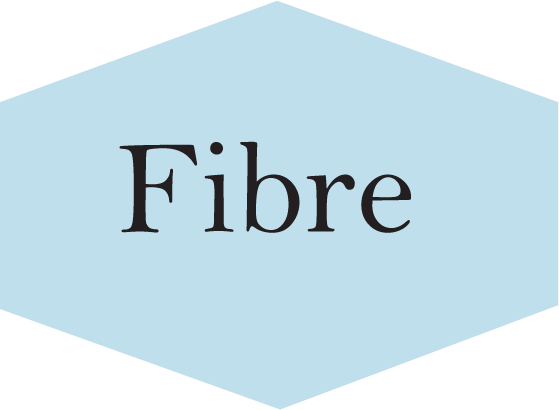
Strawberry Compote and Yogurt Ripple
Healthy Flaxseed and Fig Granola
Buckwheat Pancakes with Blueberry Compote
Feta and Tomato Pan-Baked Eggs
Roasted Tomatoes on Rye with Avocado
Broccoli, Almond, Chilli and Lemon Wholewheat Fusilli
Barley Risotto with Emerald Pesto and Asparagus
Roasted Mackerel with Ginger and Carrot Salad
Kale, Red Quinoa and Roasted Squash Salad with Toasted Seeds
Poached Chicken with Ginger and Lemongrass Broth
Healthy Chicken and Sweet Potato Chips
Roasted Pork with Pears and Fennel Seeds
Giant Meatballs and Tomato Rice
Hearty Lamb and Root Vegetable Stew with Barley
Congratulations! This may be the second recipes chapter, but I can assure you that it’s the first chapter of the rest of your life. Once you see that little line appear on the pregnancy test, your whole life instantly changes! With no longer just yourself to look after, healthy eating will become something that I’m sure you will be very keen to embrace. Choosing to eat a well-balanced and healthy diet while pregnant will have a positive effect on you and your baby for the rest of your lives.
Your body will be working extra hard to absorb all the relevant nutrients from your normal daily food, to ensure the little one inside you is growing as he or she should. Without a healthy and well-balanced diet, your body will be forced to work even harder, leaving you even more exhausted.
Despite what many people often say, you are not eating for two. In fact, you need no extra calories until you are six months pregnant and in the third trimester of pregnancy, when you need only an extra 200 calories per day – the equivalent of a slice of toast and a banana.
In the first trimester, it can feel a bit like you have the worst hangover you have ever experienced. At least that’s how I felt. Extreme tiredness and sickness can hit you in great waves when you are least expecting it. This is caused by changing hormones, but once the placenta has developed and taken over the job your hormones are doing, you should start to feel better (usually around weeks 12–16).
Morning sickness differs from woman to woman and doesn’t just occur in the morning, despite its name. For some, it can continue throughout the entire pregnancy and no one is really sure why. In very unfortunate cases, women can suffer with a condition called hyperemesis gravidarum. This causes excessive vomiting and nausea throughout pregnancy and can lead to hospitalisation to replenish fluids lost through sickness. This type of sickness usually presents itself at around weeks 4–5 and lasts longer than the usual 6–8 weeks.
So what’s this chapter all about, if most of the time you feel like putting your head down a toilet or crawling under the duvet until it’s all over? Well, women can feel anxious about not wanting to eat certain foods during the first 12 weeks of pregnancy. This chapter will show you that, at this stage, a little can go a long way, and you don’t need to force yourself to eat copious amounts of kale if you don’t feel like it. Also included in this chapter are recipes to help reduce the symptoms of morning sickness or at least keep them at bay for a while, and recipes to provide nourishment for you and baby without you having to spend hours in the kitchen cooking and clearing up.
During my first trimester I only wanted carbohydrates, and many women find they feel utterly ravenous all the time. It’s important to keep your blood sugars up, so eat regularly and enjoy some healthy snacks; eating often can also help reduce nausea. I know it’s tempting to reach into the cookie jar, and of course this is fine every so often, but it won’t make you feel better in the long run. Have a look at the Healthy Snacks and Sweet Treats chapters for some ideas (see here).
Some women, however, find that they have lost their appetite completely and the sheer sight and smell of food is enough to make them run a mile. If that sounds like you, please don’t worry. You can rest assured that if you have had a balanced and healthy diet before falling pregnant (hopefully through eating from the preconception chapter!) then you will have laid down a healthy supply of the essential minerals and vitamins for when you need them.
This is also a good opportunity to get your partner involved – after all, it takes two to tango; get them behind the stove if you really can’t face it. Little and often is my tip during the first 12 weeks. Bulk cooking is also great, so that you have something good to eat when you really don’t feeling like getting the chopping board out.
Whatever your preferences and however you are feeling, there is plenty to suit you in this chapter.
Baby’s Development In The First Trimester: 0–12 Weeks
Major nutrients needed during the first 12 weeks of development are: protein, vitamins A, B6, B12, C and D, beta-carotene, essential fatty acids (DHA, see here), folate, iron, zinc, calcium, magnesium and selenium.
During the first 12 weeks of pregnancy your baby will grow the fastest that it will throughout the whole pregnancy. By the end of week 12, all of your baby’s organs will be formed and it will resemble a human. Its arms and legs grow rapidly, along with muscles that begin to develop. For this to happen we need to be eating foods rich in calcium, protein and carbohydrates.
Your baby’s central nervous system starts to develop and become ready to mature. The B-group vitamins will play a strong role here, along with protein, zinc, folate and calcium.
Your baby’s heart will start beating for the first time and its blood will start to circulate. To do this, your baby will absorb protein, B vitamins, iron, folate, calcium and zinc from you.
As your baby’s brain and muscles form and grow, calcium, B vitamins, potassium and essential fatty acids will help baby’s bones start to form and harden. Your baby will also absorb magnesium, zinc, protein and vitamin C to help with this.
Your baby’s eyes develop in the first eight weeks of pregnancy, although it will not be able to sense light for quite some time. Vitamins A, B2 and D, and beta-carotene are all essential for healthy eyesight in your baby.
Skin, hair and ears also start to form with the help of selenium and vitamins A, B and D.







Fruit compotes are great with yogurt and to have on porridge, in smoothies, on cereals or on top of ice cream when you want a treat. You can make them with most fruits but I have chosen strawberries here, not only because they have just come into season as I am writing this chapter, but also because they are a great source of vitamin C, which increases the absorption rate of iron and, in turn, helps prevent anaemia. Flaxseed is a great source of omega-3, believed to be essential for your growing baby’s eye and brain development, so get sprinkling!
PREP TIME 15 MINUTES • COOK TIME 10 MINUTES • MAKES 10 PORTIONS
FOR THE COMPOTE
1kg strawberries, hulled (cut very large ones into quarters)
1 vanilla pod, split lengthways
3 cardamom pods
juice of 2 lemons
100ml agave nectar
TO SERVE
100ml natural yogurt
2 tbsp strawberry compote
1 tsp milled flaxseed
1 tsp sunflower seeds
1 tsp Brazil nuts, chopped
1 Sterilise a 1 litre Kilner jar or 3 × 300ml jam jars – see the instructions here for sterilising jars.
2 Place the strawberries in a large saucepan with the vanilla pod, lightly crushed cardamom pods, lemon juice and agave nectar. Slowly simmer over a low heat, stirring frequently, until the compote is the consistency you prefer. I like mine chunky so I usually simmer it for 10 minutes, but you can cook yours for longer if you prefer a softer texture.
3 Spoon the compote into your sterilised jar(s) along with the vanilla pod and cardamom, as the spices will continue to infuse into the compote in the jar. Store in the fridge for up to 2 weeks once opened. (If stored properly in a sealed jar it can keep for up to a year.)
4 To serve, pour the yogurt into a tumbler or bowl, add a couple of tablespoons of strawberry compote and gently ripple it through. Sprinkle with the seeds and nuts before eating. Alternatively, you could scatter some Healthy Flaxseed and Fig Granola over the top (see here).






I know there are loads of different types of granola on the supermarket shelves, but by making your own you know exactly what has gone into it and therefore exactly what and how much goodness you are eating. This granola recipe is great both for preconception and throughout your pregnancy. It contains plant proteins as well as omega-3 to make for a very healthy body and mind. I make my granola in a big batch, which lasts for a couple of weeks, and I vary what I put in it from time to time.
PREP TIME 10 MINUTES • COOK TIME 30 MINUTES • MAKES 800G (8–10 PORTIONS)
75g Brazil nuts
75g pecans
75g dried figs, dates or apricots
300g rolled oats
50g milled flaxseed
100g pumpkin seeds
100g sunflower seeds
50g flaked almonds
2 tsp ground cinnamon
3 tbsp runny honey
2 tbsp rapeseed oil
1 Preheat the oven to 170°C (fan 150°C) and line a baking tray with parchment.
2 Place the Brazil nuts, pecans and dried fruit into a food processor and pulse 6–8 times until they are roughly chopped. Add all the remaining ingredients and pulse again 3–4 times to combine everything together well.
3 Sprinkle the mixture on to the lined baking tray and cook in the oven for 20–30 minutes or until slightly golden brown. Leave to cool before transferring into a 1 litre Kilner jar or airtight container, ready to serve for your delicious breakfast. The granola will stay fresh for up to 1 month.
SERVING SUGGESTIONS:
Almond milk, hazelnut milk or cows’ milk
Natural unsweetened yogurt or Greek yogurt
Fresh berries, pomegranate seeds or chopped-up fruit of your choice
Dried cranberries, blueberries or goji berries
Manuka or any other good quality runny honey





Make a big batch of these at the weekend for brunch, when you have a little more time to relax, then freeze the leftovers for when you don’t have time to cook or are feeling too unwell to do so. Simply freeze any pancakes you don’t eat between sheets of greaseproof paper and store in a freezer-safe container, then heat one or two in the microwave or a hot pan with a little butter when you feel the need for a hearty breakfast – they will taste just as delicious.
Buckwheat contains slow-releasing and nourishing carbohydrates which will keep you feeling fuller for longer and keep any waves of sickness at bay. Blueberries are rich in vitamin C, which will help contribute towards a healthy immune system, essential for you and your developing embryo. I buy blueberries in large batches when they are in season, from June to September, and freeze them whole or make lots of compote to freeze.
PREP TIME 10 MINUTES • COOK TIME 20 MINUTES • MAKES 8–10
225g buckwheat flour
2 tsp ground cinnamon
2 tsp baking powder
2 free-range eggs
225ml almond milk or semi-skimmed cows’ milk
2 tbsp maple syrup
2 tbsp butter, melted
2–3 tbsp rapeseed oil
FOR THE COMPOTE
400g blueberries, fresh or frozen
1 tsp vanilla bean paste
2 tbsp agave nectar or maple syrup
TO SERVE
natural yogurt
maple syrup (optional)
1 Make the pancake batter by sifting the buckwheat flour, cinnamon and baking powder into a bowl. Make a well in the centre and crack in the eggs. Beat the eggs, bringing in some of the flour from the sides of the bowl to form a paste. Add half the milk and mix again, whisking in the remaining flour as you mix. When you have a smooth, thick paste, beat in the rest of the milk, the maple syrup and the melted butter. Leave the batter to rest while you make the compote.
2 Place the blueberries in a small saucepan over a low heat and add the vanilla bean paste and agave nectar. Cook for 5–10 minutes, until the berries burst, stirring once or twice so they don’t catch on the bottom of the saucepan. Turn off the heat and leave to cool slightly.
3 Heat a large frying pan over a medium heat, add 1 tablespoon of rapeseed oil and wipe it around the pan using kitchen roll. Pour half a ladle of pancake batter into the pan. You should be able to cook 2–3 pancakes at a time, depending on the size of your frying pan. Turn the pancakes over when bubbles start to appear on the surface of the batter, after about 2 minutes. Cook until golden brown on both sides. Repeat this process, adding a little more oil each time, until you have used all the batter.
4 Serve the pancakes with a large spoonful of compote and a dollop of yogurt. Drizzle over more maple syrup if you fancy it.



Eggs contain iodine, which is essential for the healthy development of your baby’s nervous system, especially in the first three months. I ate this dish a lot in my first trimester. I found that baked eggs, rather than scrambled, were easy to digest and helped settle my stomach, not to mention being a good way to eat them when you can’t have runny yolks. I was a sucker for all things salty, so feta was a great way to satisfy this craving. Tomatoes contain lots of vitamin C, which not only gives you energy but also keeps your immune system firing on all cylinders, making sure you and your baby stay healthy during these tough first three months.
PREP TIME 5 MINUTES • COOK TIME 15–20 MINUTES • SERVES 2
4 free-range eggs
2 tbsp rapeseed oil
12 baby plum tomatoes, halved
75g pasteurised feta cheese, crumbled
1 handful of watercress, roughly chopped
salt and freshly ground black pepper
TO SERVE
4 slices of rye bread or Super Seed Soda Bread (here)
butter
1 Preheat the grill to high. Crack the eggs into a bowl and whisk well.
2 Place a medium-sized non-stick ovenproof frying pan over a medium heat and add the rapeseed oil. Once hot, add the tomatoes. Fry them for 4–6 minutes, until they start to burst, then add the eggs. Stir well, add the feta and watercress, and season with a little salt and lots of black pepper.
3 Turn down the heat and cook on the stove for 3–5 minutes, until the eggs to start to set. Transfer the pan to the grill and cook for a further 10 minutes, to allow the dish to cook through. You need to do this or the bottom will be overcooked and the top undercooked.
4 Remove the pan from the grill, turn the baked eggs out on to a plate and enjoy with hot buttered toast.








This recipe may sound a bit simple (which if you feel like I did in the first couple of months is a blessing), but it is really good for you and your developing baby. Buy a good quality avocado or hemp seed oil to drizzle over the top and it will keep you going all morning. I had this all the time in my first trimester and it really helped set me up for the day without leaving me feeling overly full. Essential fatty acids found in hemp seed oil and avocados are essential for healthy eye and brain development in your baby.
PREP TIME 10 MINUTES • COOK TIME 10 MINUTES • SERVES 2
10 baby plum tomatoes
1 tbsp olive oil
1 ripe avocado
4 tbsp cottage cheese
zest and juice of ½ lemon
4 slices of rye bread or Super Seed Soda Bread (here)
1 tbsp sunflower seeds
1 tbsp pumpkin seeds
2–3 tsp avocado or hemp seed oil
salt and freshly ground black pepper
1 Preheat the oven to 220°C (fan 200°C). Place the tomatoes in a small baking dish and drizzle with the olive oil. Roast the tomatoes in the oven for 10 minutes, until they start to burst.
2 Meanwhile, cut the avocado in half and remove the stone. Scoop out the flesh using a spoon, place in a bowl and mash with the back of a fork. Season with a small amount of salt and black pepper, and fold in the cottage cheese. Mix through the lemon juice.
3 Toast the bread, then pile the cottage cheese and avocado mixture on top. Grate over the lemon zest, then scatter over the sunflower and pumpkin seeds. Top with the roasted tomatoes and drizzle with avocado or hemp seed oil.





Broccoli is a superfood for all expectant mums as it is high in folate, essential for a healthy nervous system in baby, and full of iron, which is needed for healthy red blood cells that carry oxygen around your body as well as to the placenta for baby. Wholewheat pasta is far higher in fibre than white pasta, helping you to maintain a healthy digestive system that tends to slow down during pregnancy. Use any shape you like!
PREP TIME 20 MINUTES • COOK TIME 20 MINUTES • SERVES 4
1 broccoli head, cut into florets, stalk chopped
500g wholewheat fusilli pasta
4–5 tbsp extra virgin olive oil or extra virgin rapeseed oil
4 anchovy fillets
2 garlic cloves, peeled and sliced
1–2 pinches of dried red chilli
1 tbsp Dijon mustard
juice of 1 lemon
3 tbsp flaked almonds, toasted
2 tbsp walnut oil
salt and freshly ground black pepper
FOR THE BREADCRUMBS
2 tbsp extra virgin olive oil or extra virgin rapeseed oil
4 tbsp dried breadcrumbs
2 tbsp flat-leaf parsley, finely chopped
zest of 2 lemons
salt and freshly ground black pepper
TO SERVE
30g Parmesan cheese, grated
1 Start by preparing the breadcrumbs. Heat the oil in a frying pan over a medium heat. When hot, add the breadcrumbs and stir. Allow them to toast for 5–6 minutes, until golden brown. Turn off the heat and mix through the parsley and lemon zest and season, with a little salt and pepper.
2 Cook the broccoli in a saucepan of boiling salted water for 2 minutes, until tender, then drain well. In a separate pan, cook the pasta according to the packet instructions.
3 While the pasta is cooking, set a sauté pan over a medium heat and add 2 tablespoons of the oil, the anchovies, garlic and chilli. Fry for 2 minutes before adding in the cooked broccoli. Now add the remaining oil, Dijon mustard and lemon juice. Season with salt and pepper. Remove the pan from the heat while the pasta finishes cooking.
4 When the pasta is cooked, add it to the broccoli mixture along with the flaked almonds and walnut oil. Serve with the breadcrumbs and Parmesan sprinkled over the top.




You will find a number of pulses and grains substituted for some or all of the rice in my ‘risottos’ throughout this book. Not only because I really do enjoy their texture and flavour, but also because they are a source of minerals, vitamins and fibre that your body simply can’t do without while carrying your precious little one, and any opportunity to eat them is a good one.
PREP TIME 15 MINUTES • COOK TIME 40–50 MINUTES • SERVES 2
800ml chicken or vegetable stock
2 tbsp rapeseed oil
2 shallots, peeled and finely diced
1 celery stick, finely diced
1 leek, trimmed and finely diced
75g pearl barley
75g Arborio rice
12 asparagus spears, stalks chopped and tips left whole
zest of 1 lemon
2 tbsp mascarpone cheese
salt and freshly ground black pepper
FOR THE EMERALD PESTO
50g hazelnuts, walnuts or almonds, preferably skin on
100g baby leaf spinach
30g flat-leaf parsley
2 garlic cloves, peeled and roughly chopped
zest and juice of 2 lemons
30g Parmesan cheese
150ml walnut or hazelnut oil
1 First make the pesto by blitzing all the ingredients in a mini-blender until you have a rough paste. Add a little water if you feel it’s too thick and not blending.
2 Heat the stock in a saucepan on the stove until it is boiling, then turn it right down to a gentle simmer.
3 Place a large casserole or sauté pan over a medium heat and add the rapeseed oil. When hot, add the shallots, celery and leek, cover with a lid and cook for 5–6 minutes, stirring every now and then.
4 Once the vegetables are soft and translucent, add the pearl barley and cook for 2 minutes until it is coated in the oil from the pan and it starts to toast slightly. Add half of the stock and leave to simmer for 12 minutes, stirring occasionally.
5 Pour in the Arborio rice and half of the remaining stock, and increase the heat. You now need to keep stirring the risotto until all the liquid has been absorbed by the barley and rice. When it has, add the remaining stock and continue to stir until the liquid is absorbed – this should take around 15 minutes over a high heat.
6 Now add in the asparagus stalks and tips and cook for another 5 minutes, until tender.
7 When you are happy your risotto is cooked (it should have a slight bite to it), stir in all of the pesto and lemon zest and mix well. Check for seasoning; you will probably need pepper and perhaps a little salt.
8 Serve your risotto with the mascarpone on top, so that it melts in as you eat it.





This is a really refreshing and light salad that contains lots of ginger, which should help with nausea and digestion. Ginger is also antibacterial, so will help keep your immune system good and strong. The carrots contain lots of beta-carotene, which supports protection against eye defects, and the mackerel will provide you with all the omega-3 your body requires for that day, which in turn will help support the development of baby’s brain and eye development and is also needed for the absorption of essential vitamins A, D, E and K.
PREP TIME 15 MINUTES • COOK TIME 12 MINUTES • SERVES 2
2 × 125g fresh mackerel fillets, pin-boned, skin on
2 tbsp rapeseed oil
juice of 1 lime
2 tbsp soy sauce
FOR THE SALAD
5cm piece fresh ginger, peeled and grated
zest and juice of 2 limes
1 tsp runny honey or agave nectar
1 red chilli, deseeded and chopped (optional)
400g carrots, peeled and grated
15g fresh mint or coriander leaves, roughly chopped
2 tbsp plain peanuts, toasted and crushed
salt
1 Preheat the oven to 200°C (fan 180°C). Season the mackerel fillets with the rapeseed oil, lime juice and soy sauce. Place on a baking tray and roast in the oven for 12 minutes.
2 While the mackerel is cooking, make the salad. Mix the ginger with the lime zest and juice, honey and chilli, if using, and a generous pinch of salt. Pour this dressing over the grated carrot in a bowl and stir in before adding the herbs and peanuts.
3 Lay the cooked fish on top of the salad and enjoy while warm. This is also great cold the next day for lunch – reserve a few fresh herbs to mix through before eating.








I often make this salad with Puy lentils rather than quinoa and both options are equally tasty. Quinoa is a grain-like seed that cooks quickly and is really very good for you. It will fill you up and provide you with lots of protein, which equals energy for mum and growing baby. Kale is a superfood in its own right. Rich in iron, it is a food we must eat to keep iron levels up and reduce the risk of anaemia. The seeds in this dish will also help bolster iron levels.
PREP TIME 15 MINUTES • COOK TIME 15 MINUTES • SERVES 2
½ small butternut squash, deseeded and cut into 2cm cubes (no need to peel)
1 tsp ground ginger
½ tsp dried chilli flakes
2 tsp paprika
3 tbsp rapeseed oil
1 tbsp runny honey
50g red quinoa, washed
150g green or purple kale
75g pasteurised feta cheese
2–3 tbsp mixed seeds (e.g. sunflower, pumpkin, sesame, poppy seeds), toasted
salt and freshly ground black pepper
FOR THE DRESSING
5cm piece fresh ginger, peeled and grated
zest and juice of 1 lemon
1 tbsp runny honey
1 tsp Dijon mustard
3–4 tbsp walnut oil
1 Preheat the oven to 200°C (fan 180°C). Place the butternut squash in a bowl. Stir in the ginger, chilli flakes, paprika, and salt and pepper, and drizzle with the rapeseed oil and honey. Line a baking sheet with parchment. Spread the coated butternut squash out on the parchment and roast in the oven for 15 minutes.
2 While the squash is cooking, prepare the rest of the salad. Cook the quinoa in a saucepan of boiling salted water for 12 minutes or until tender. Drain, then tip into a bowl and set aside. Blanch the kale in a separate pan of salted boiling water; cook for 1 minute before draining and running under cold water to stop it overcooking.
3 Make the dressing by putting all the ingredients in a small jar, placing the lid on and shaking hard until everything is well combined.
4 Once the squash is cooked, mix it into the warm quinoa and fold in the kale. Crumble in the feta cheese, sprinkle over the seeds and pour over all of the dressing. Mix and season well with salt and pepper before serving.




A simply flavoured light broth is just the thing when you feel like you need a little bit of healing from the inside out. I have kept this recipe as simple and plain as possible – it’s great if you don’t have a huge appetite during the first trimester. The ginger should go some way to helping relieve symptoms of nausea, as will the delicate healing broth, which will keep you hydrated. Feel free to add other ingredients if you like, such as green beans, spring onions or mint, and for something more substantial throw in some soba noodles.
PREP TIME 20 MINUTES • COOK TIME 1 ¾ HOURS • SERVES 4
1 × 1–1.2kg free-range chicken
1 leek, trimmed and thickly sliced
1 white onion, peeled and sliced
2 carrots, peeled and thickly sliced
1 garlic bulb, cut in half crosswise
1 lemongrass stick, squashed with the back of a knife
5cm piece fresh ginger, peeled and sliced
salt and freshly ground black pepper
FOR THE FINISHED BROTH
6cm piece fresh ginger, peeled and cut into matchsticks
2 carrots, peeled and cut into matchsticks
1 handful of bean sprouts
TO SERVE (OPTIONAL)
fresh coriander leaves
alfalfa sprouts
radish sprouts
1 Place the chicken in a large casserole pan and add all the other ingredients for the broth. Cover completely with cold water, season generously with salt and bring to the boil. Once boiling, turn the heat down and allow to simmer, covered with a lid, for 1¼ hours.
2 Once the chicken is cooked, turn off the heat. Remove the chicken from the stock and place it on a plate. Set a sieve over a large clean saucepan and pour the broth through it. The cooked vegetables and aromatics have now done their job and can be discarded or blitzed into a vegetable soup (minus the garlic, lemongrass and ginger).
3 Shred the chicken meat into bite-sized pieces and add it to the strained broth. (You may not need all of it, and can keep some back for a chicken salad.) Add the strips of ginger and simmer for 4–5 minutes to heat through. Check for seasoning.
4 Place the raw carrot and bean sprouts in the bottom of your serving bowls and ladle the hot stock and chicken over the top. Serve steaming hot and sprinkle over some fresh coriander, and alfalfa and radish sprouts, if you like.




Pregnancy is very subjective, and every woman has different experiences with regard to what they fancy eating and when. I’ve spoken to many women about what they craved during the first trimester of pregnancy. Many, like me, needed to feel full and overload on carbohydrates, while others had no appetite at all and found that only small meals of plain wholesome food would help keep the sickness at bay. This recipe is for the first group. I felt constantly hungry during the first trimester and this recipe was something I cooked many times.
PREP TIME 30 MINUTES • COOK TIME 25 MINUTES • SERVES 2
100ml buttermilk
2 × 120–150g free-range skinless chicken breasts, or turkey breast steaks
2 slices wholemeal bread (stale is best, or dried out in the oven)
50g bran flakes
2 tbsp flat-leaf parsley, finely chopped
salt and freshly ground black pepper
FOR THE SWEET POTATO CHIPS
2 large sweet potatoes
2 tbsp rapeseed oil
1 tsp smoked paprika
1 tsp ground cumin
1 tsp dried oregano
salt and freshly ground black pepper
TO SERVE
2 lemon wedges
salt
1 Preheat the oven to 200°C (fan 180°C). Pour the buttermilk into a large bowl and season with salt and pepper. Butterfly the chicken breasts by slicing them almost all of the way through the middle crossways and opening them out like a book. (If you are using turkey, put the steaks between two sheets of cling film and bash them with a rolling pin to flatten them to around ½cm thick.) Marinate the chicken in the buttermilk for 20 minutes to tenderise it.
2 Meanwhile, prepare the sweet potatoes by cutting them into 3cm-thick chips and place them in a bowl. Leave the skin on, as it not only tastes delicious but will also stop the chips falling apart during cooking. Add the remaining ingredients for the chips and mix well to coat thoroughly. Line a tray with baking parchment and spread the seasoned chips on it.
3 Blitz the stale bread with the bran flakes until they are fine crumbs, then add in the parsley. Remove the chicken from the buttermilk and coat well in the crumb mixture.
4 Place the chicken on the tray with the chips and cook in the oven for 10 minutes. Remove the tray from the oven, turn over the chips and chicken breasts, and cook for another 15 minutes.
5 The chips should now be nice and crispy and the chicken coating crisp and golden brown. Remove from the oven and serve with a wedge of lemon and a sprinkle of salt.




Pork is rich in selenium, which needs to be present in your diet to help with the development and growth of baby’s ears, skin and eyes. Selenium is also important for your hormone balance during the testing time of the first trimester. Constipation and nausea are common complaints at this time, so the fibre from the pears will help keep things regular and your digestive system nice and healthy. Fennel seeds are often used to counteract nausea; try them crushed in some warm water during the day instead of your usual tea.
PREP TIME 10 MINUTES • COOK TIME 30 MINUTES • SERVES 2
2 pears, cored and cut into eighths
350g baby new potatoes, halved
2 fresh thyme sprigs, leaves picked
2 tbsp fennel seeds
2 tbsp rapeseed oil, plus extra to drizzle
1 tbsp runny honey
or maple syrup
1 pork fillet or tenderloin (approx 400g)
salt and freshly ground black pepper
1 Preheat the oven to 200°C (fan 180°C). Place the pears, potatoes, thyme leaves (reserving a few for the pork), fennel seeds, oil and honey in a large bowl, mix well and season with salt and pepper. Spread the coated pears and potatoes out on a baking tray and roast in the oven for 10 minutes.
2 Slice the pork fillet into 4 pieces and season well with salt and pepper, the reserved thyme leaves and a drizzle of oil. After the initial 10 minutes, remove the baking tray from the oven and add the pork, cut side down. Roast for a further 25 minutes until the potatoes and pears are golden brown and the pork is firm to the touch. (If you are worried that the pork won’t be cooked you can check by inserting a metal skewer into the thickest part of the fillet. Leave it for 5 seconds before removing and placing the skewer on the back of your hand. If it is very hot, the pork is ready and safe to eat.)
3 Remove from the oven and set to one side to rest under a sheet of foil for 5 minutes. Slice the pork and serve with the potatoes and pears. Drizzle over any juices from the cooking tray and eat immediately.






This is one of those flavour-packed dishes that you can shove into the oven and leave to work its magic. Rather than messing about making lots of little meatballs, one big one each is just perfect for when you don’t have the energy to spend lots of time in the kitchen. Beef is a great source of iron, essential for growing baby and for a healthy mum. Tomatoes are packed full of vitamin C, and wholegrain rice is a brilliant source of fibre and zinc.
PREP TIME 15 MINUTES • COOK TIME 50 MINUTES • SERVES 2
400g lean minced beef, or good quality minced pork
1 free-range egg
2 tsp dried oregano
1 tsp ground cumin
1 tsp ground coriander
pinch of fennel seeds
100g mozzarella cheese
salt and freshly ground black pepper
FOR THE RICE
2 tbsp rapeseed oil
1 large onion, peeled and finely diced
2 garlic cloves, peeled and finely chopped
2 tsp ground cumin
1 tsp ground coriander
1 tbsp tomato purée
200g brown rice
400ml vegetable or chicken stock
1 × 400g tin chopped tomatoes
30g Parmesan cheese, grated
TO SERVE
rocket, mizuna or watercress
1 Preheat the oven to 200°C (fan 180°C). In a large bowl, mix the minced beef together with the egg, herbs and spices, then season well with salt and pepper. Form the mixture into 2 large meatballs and push half the mozzarella into the centre of each one. Seal the meatballs well so that none of the cheese oozes out during cooking.
2 Meanwhile, heat the oil in a large casserole dish over a high heat. Fry the meatballs for 5–6 minutes until golden brown all over. Remove them from the dish and set aside. Turn the heat down to medium and add the onion. Cook for 5–6 minutes, then add the garlic, cumin, coriander and tomato purée, and cook for 2–3 minutes.
3 Add the rice to the casserole and stir it around well before adding the stock and tomatoes. Bring to the boil, cover with a tight-fitting lid or some foil, and transfer to the oven for 20 minutes.
4 Remove the casserole from the oven and stir well. If the mixture has already absorbed all the liquid, add another 100–200ml of hot stock. Place the meatballs on top, only slightly buried in the rice, and sprinkle generously with the grated Parmesan. Cook in the oven, uncovered, for a further 20 minutes.
5 Serve hot with some peppery leaves such as rocket, mizuna or watercress.






A hearty stew can be exactly what you need when you’re feeling a little out of sorts, and this is one that is extremely simple to prepare and tastes great the next day, saving you the job of cooking dinner when you really don’t fancy it.
Root vegetables are a very good source of nourishing carbohydrates and have a low glycaemic index, which means they release energy slowly, helping to control blood sugar levels and feelings of fatigue. Lamb, especially the grass-fed variety, is an amazing source of vitamin B12, which is needed for baby’s neural tube development in the first six weeks of pregnancy and then for the nervous system in the following weeks. It also helps blood cells to multiply.
PREP TIME 5 MINUTES • COOK TIME 50 MINUTES • SERVES 4
400g lamb neck fillet, diced into 2cm pieces
4 tbsp plain flour, plus 1 tsp salt and 4–5 twists of black pepper
2 tbsp rapeseed oil
1 white onion, peeled and sliced
2 bay leaves
1 litre lamb or chicken stock
2 tbsp Worcestershire sauce
600g mixed root vegetables, such as swede, potato, carrot and parsnip, peeled and diced
50g pearl barley
30g flat-leaf parsley, roughly chopped
salt and freshly ground black pepper
1 Coat the lamb in the seasoned flour in a bowl and dust off the excess.
2 Place a large casserole pan over a high heat and add half the rapeseed oil. When hot, add the lamb and seal on all sides until golden brown. This should take about 6 minutes. Remove the lamb and place it on some kitchen roll to absorb any excess fat.
3 Add the remaining oil to the pan, turn the heat down to medium and add the onion along with the bay leaves. Cook for 5–6 minutes, until the onions are soft, before adding the lamb back in. Pour in the stock and Worcestershire sauce, and bring to the boil. Once boiling, lower the heat and allow to gently simmer for 25 minutes.
4 After the stew has had 25 minutes, stir in the root vegetables and pearl barley. Cook for another 20 minutes until everything is tender. Season the stew before stirring through the parsley and serving.